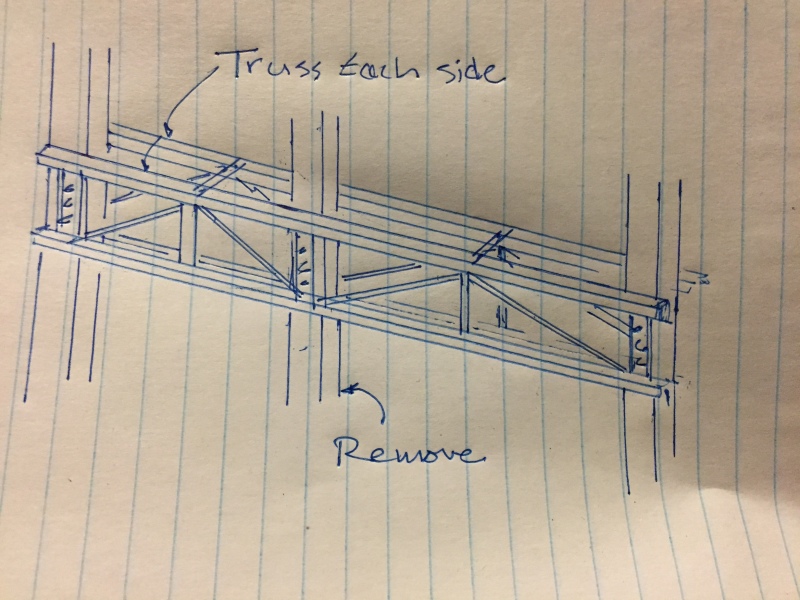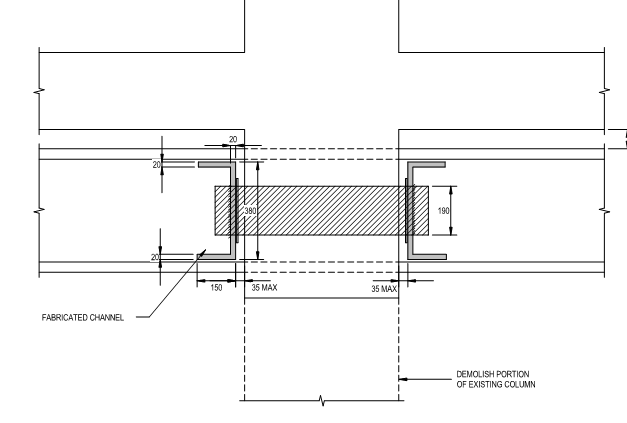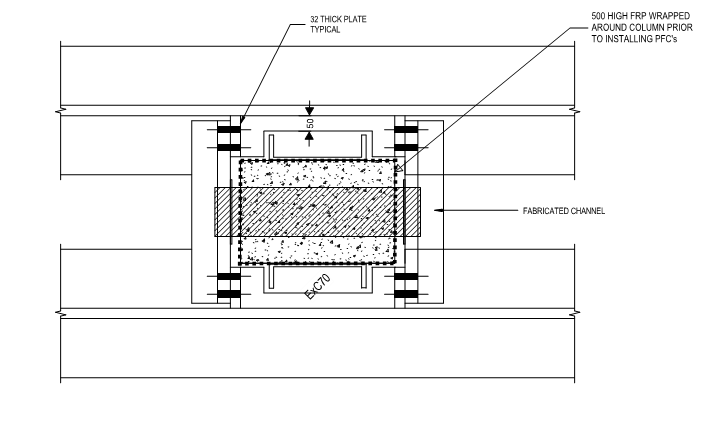Temporaryworks
Structural
Hi All,
I would be interested to get peoples opinion on the design of a shear key around a column which receives the load from a transfer truss supporting part of a 14-storey building. Please could forum-users read this in conjunction with my attached sketch which is intended to convey alot of the information you might need to reply. I would like any discussion on this but am interested in failure mechanisms. I am especially interested in the my interpretation of the shear failure which I would appreciate comment on.
I would undertake a bearing check between the shear key and the concrete
- As there is a eccentricity between shear key and the applied load from the truss, Macalloy bars are to be used to provide equilibrium and they would be pre-loaded to maintain a clamping force and prove the installation.
- The shear failure would be a vertical shear failure akin to the maximum shear capacity achieved when designing a beam for web crushing at supports. Thus a significant shear strength can be mobilised in the concrete - in AS3600 this is approx 0.2*f'c*do*b where b is column width and do = height of column above shear key. The column would be able to mobilise this capacity above both shear keys.
- Steel design/stiffenrs/welded connections etc obviously required
- Bars to be preloaded to unfactored tension load.
- Load in column is approx 2000 kN dead and 250kN live (construction loading)
- I will probably use two shear keys stacked on top of each other to achieve safe bearing stress on to concrete which is driving design at the moment.
To ease peoples fears, my line manager has tasked me with producing a draft design for this, then he will check it thoroughly and is a very experienced engineer. I will not be designing this solely off of the back of advice on the forum but it will help me to understand the problem and thus present a sensible, worked solution to my manager for review.
Many thanks in advance.
Attachment link:
I would be interested to get peoples opinion on the design of a shear key around a column which receives the load from a transfer truss supporting part of a 14-storey building. Please could forum-users read this in conjunction with my attached sketch which is intended to convey alot of the information you might need to reply. I would like any discussion on this but am interested in failure mechanisms. I am especially interested in the my interpretation of the shear failure which I would appreciate comment on.
I would undertake a bearing check between the shear key and the concrete
- As there is a eccentricity between shear key and the applied load from the truss, Macalloy bars are to be used to provide equilibrium and they would be pre-loaded to maintain a clamping force and prove the installation.
- The shear failure would be a vertical shear failure akin to the maximum shear capacity achieved when designing a beam for web crushing at supports. Thus a significant shear strength can be mobilised in the concrete - in AS3600 this is approx 0.2*f'c*do*b where b is column width and do = height of column above shear key. The column would be able to mobilise this capacity above both shear keys.
- Steel design/stiffenrs/welded connections etc obviously required
- Bars to be preloaded to unfactored tension load.
- Load in column is approx 2000 kN dead and 250kN live (construction loading)
- I will probably use two shear keys stacked on top of each other to achieve safe bearing stress on to concrete which is driving design at the moment.
To ease peoples fears, my line manager has tasked me with producing a draft design for this, then he will check it thoroughly and is a very experienced engineer. I will not be designing this solely off of the back of advice on the forum but it will help me to understand the problem and thus present a sensible, worked solution to my manager for review.
Many thanks in advance.
Attachment link:





